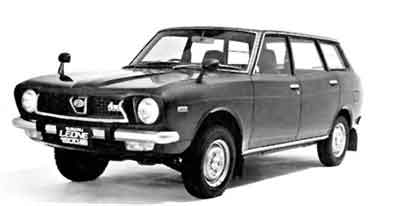Japanese Cars Of The 1970s
|
The 1970s saw an increase in demand for fuel-efficient Japanese cars. This allowed Japanese manufacturers to start internationalizing strategies, which were based on local production in export market countries. This led to joint ventures with foreign manufacturers. |
During this time, US manufacturers like General Motors and Ford were starting to promote their world car which was targeted at producing smaller cars on a global scale to meet the demand for small cars. As a part of internationalizing strategies, Japanese car makers like Isuzu and Suzuki entered into manufacturing tie-ups with General Motors. Toyota also formed a joint venture company, New United Motor Manufacturing Inc, with General Motors in the United States. Toyo Kogyo (now Mazda) built ties with Ford to capture the Asia and the Pacific region.
Honda established joint venture with British Leyland in the United Kingdom while Nissan and Motor Iberica formed a joint venture in Spain. Nissan also formed a joint venture with Alfa Romeo in Italy.
Japanese automobile manufacturers also started making plans to establish local production units based out of the United States and Europe. The Japanese cars of the 1970s like Honda, Nissan, Toyota, Mitsubishi, Mazda, Fuji, Suzuki and Isuzu started making appearance in the United States and Canada in the 1980s with the establishment of manufacturing facilities in these countries, which were initialized in the 1970s.
After the Australian government introduced restriction limiting imports to 20 percent of market share in 1975, Toyota and Nissan obtained domestic manufacturer status and started producing their brands in Australia in 1976. Mitsubishi started local production “down under” in 1979 after it bought out Chrysler Australia.
More Articles :

|
